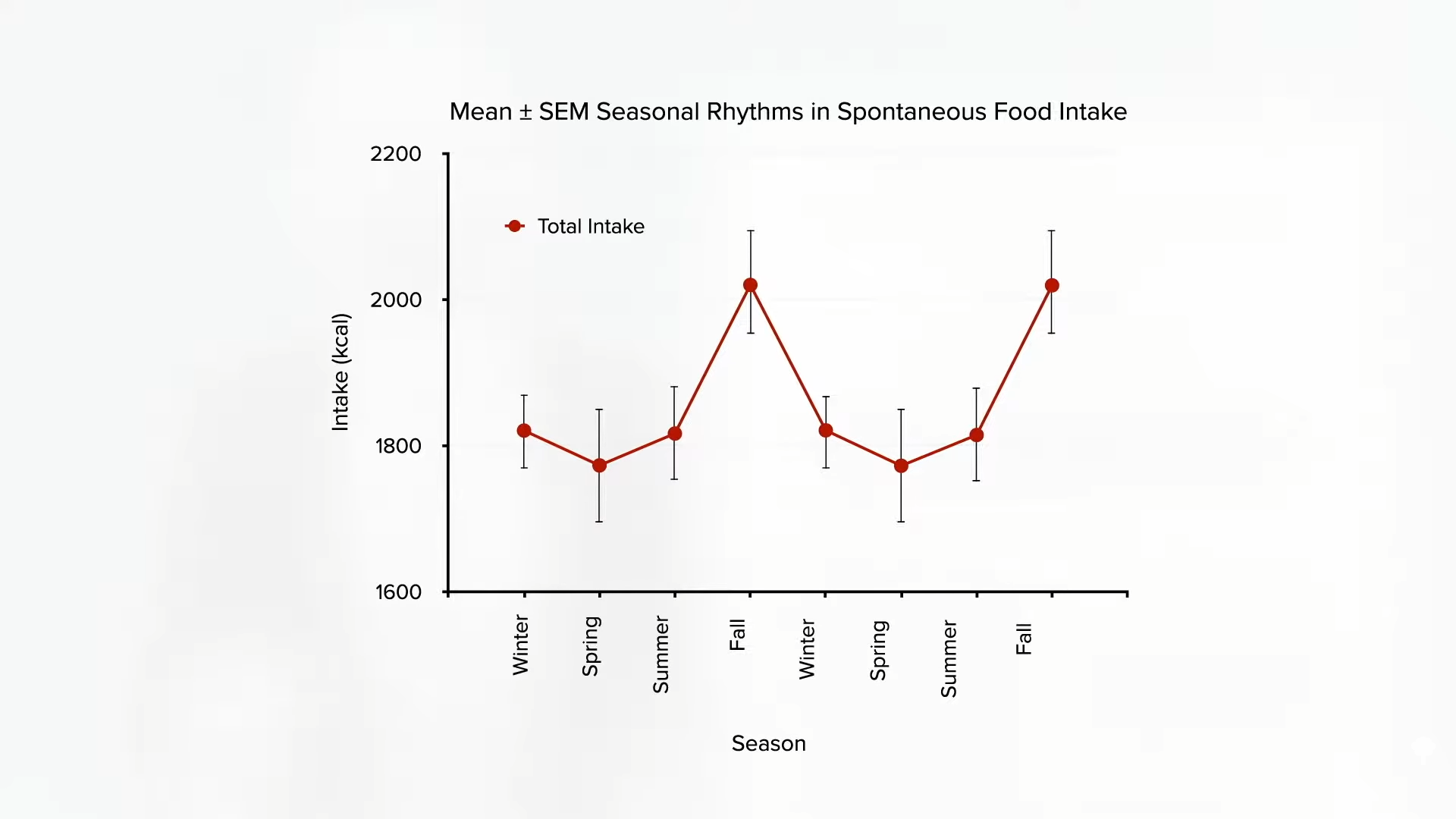SAD is not just an acronym for the Standard American Diet.
There is a condition known as Seasonal Affective Disorder, characterized by increased appetite and cravings, as well as heightened sleepiness and lethargy. It begins in the fall when daylight decreases. This seems to represent the extreme end of a normal spectrum of human behavior. We seem to eat more as the days get shorter. There is a „pronounced seasonal rhythm“ in calorie intake with larger meal sizes, faster eating speed, increased hunger, and overall calorie intake in the fall.
Some animals prepare for winter by hibernating, doubling their fat reserves with the autumn abundance to counteract the subsequent winter scarcity. In humans, genes similar to those for hibernation have been identified, which could explain why we exhibit some of the same behaviors and the autumn effect is not subtle. As you can see in the graphic below and at 1:06 in my video Friday Favorites: Why People Gain Weight in the Fall, researchers calculated a difference of 222 calories in the amount of calories we consume in the fall compared to spring. This is not just because it’s colder, as we eat more in the fall than in winter. It seems that we are genetically programmed to prepare for the hardships of winter that never come.
It is remarkable that our bodies, despite modern lighting and heating, still perceive enough environmental cues from the changing of seasons to have such a profound impact on our eating behavior. It is not surprising that bright light therapy is used to treat Seasonal Affective Disorder, nearly tripling the likelihood of remission compared to placebo. Even though it has never been directly tested, it can’t hurt to take a few extra morning and daytime walks with the dog in the fall to ward off the weight gain of the upcoming holidays.
People blame the holidays for overeating. However, it may be that „it is not the holidays that lead to increased food intake, but the seasonally increased food intake in autumn that coincides with the holidays.“
Regardless of this, as you can see below and at 2:15 in my video, other „specific recommendations for preventing obesity and Metabolic Syndrome by improving circadian health,“ based on varying levels of evidence, include: sleeping at night and being active during the day; getting enough sleep – at least seven or eight hours per night; going to bed early, waking up early; and short naps are okay. (Contrary to popular belief, a nap during the day does not seem to negatively affect nighttime sleep.) Also recommended: avoid bright light at night; sleep in complete darkness if possible; make breakfast or lunch the largest meal of the day; avoid eating or exercising right before bedtime; and completely avoid eating at night.



